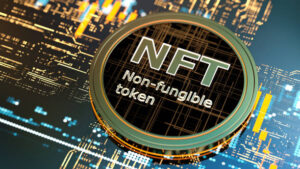What are NFTs and Why are They Trending? How to Use NFTs?
You may have heard of NFTs, or non-fungible tokens, as the latest craze in the tech world. But what are they exactly, and why are they so popular? In this article, I will explain what NFTs are, how they work, and what are some of the benefits and challenges of using them.
What are NFTs?

NFTs are digital assets that represent unique and scarce items, such as artworks, collectibles, music, videos, games, etc. They are created and stored on a blockchain, which is a distributed ledger that records transactions and ensures their security and authenticity. Unlike cryptocurrencies, which are fungible (meaning they can be exchanged for other units of the same value), NFTs are non-fungible (meaning they cannot be replaced or duplicated). Each NFT has a unique identifier and metadata that distinguishes it from other NFTs.
How do NFTs work?
To create, you need to have a digital file of the item you want to tokenize, such as an image, a song, or a video. You also need to have a wallet that supports the blockchain platform you want to use, such as Ethereum, Binance Smart Chain, or Solana.
Then, you need to use a platform or a marketplace that allows you to mint (create) and sell (or buy) NFTs, such as OpenSea, Rarible, or Foundation. You can set your own price and terms for your NFT, such as royalties or resale rights. Once you mint your NFT, it is stored on the blockchain and can be verified by anyone. You can also transfer or trade your NFT with other users on the same platform or across different platforms.
How to Create NFTs?
- Creating Digital Art or Content:
- The first step in creating is to have something to tokenize. This could be digital art, music, videos, or any other form of digital content. Ensure that you have the rights to the content you’re planning to turn into an NFT.
- Choosing an NFT Platform:
- There are several platforms where you can create and sell NFTs. Some popular ones include OpenSea, Rarible, and Mintable. Choose a platform that aligns with your needs and the type of content you’re creating.
- Setting Up a Crypto Wallet:
- To interact with NFT platforms, you’ll need a cryptocurrency wallet. This wallet will be used to store your digital assets and cryptocurrencies. Some commonly used wallets include MetaMask, Trust Wallet, and Coinbase Wallet.
- Minting Your NFT:
- Minting is the process of turning your digital content into an NFT on the blockchain. On your chosen platform, you’ll upload your content, add descriptions, and set the terms of sale. There might be a fee associated with minting, which is usually paid in cryptocurrency.
- Listing and Selling Your NFT:
- Once your NFT is minted, you can list it for sale on the marketplace. You can set a fixed price or opt for an auction-style sale. When someone purchases, the platform will handle the transaction, and you’ll receive the payment in your crypto wallet.
- Promoting Your NFT:
- To increase the chances of selling your NFT, consider promoting it on social media platforms and within relevant online communities. Engaging with potential buyers and collectors can help bring attention to your work.
What are the benefits of NFTs?
NFTs offer several advantages for both creators and collectors of digital assets. Some of the benefits are:
- NFTs enable digital scarcity and uniqueness, which can increase the value and demand for the items.
- They provide proof of ownership and authenticity, which can prevent fraud and piracy.
- Allow creators to monetize their work and retain control over their intellectual property rights.
- Enable collectors to access rare and exclusive items and support their favorite artists or creators.
- Create new possibilities for innovation and creativity in the digital space.
What are the challenges of NFTs?

NFTs also face some challenges and limitations that need to be addressed. Some of the challenges are:
- NFTs consume a lot of energy and resources, which can have a negative impact on the environment.
- NFTs depend on the security and stability of the blockchain platforms, which can be vulnerable to hacks or glitches.
- Are subject to legal and regulatory uncertainties, which can affect their validity and enforceability.
- Volatile and speculative, which can lead to price fluctuations and market bubbles.
Conclusion
NFTs are a new and exciting phenomenon in the tech world that have attracted a lot of attention and interest from both creators and collectors of digital assets. They offer a way to create and own unique and scarce items that can have artistic, cultural, or sentimental value. However, they also pose some challenges and risks that need to be considered before investing in them. As the technology evolves and matures, we can expect to see more innovation and diversity in the NFT space.
Continue Reading: New Binance Crypto Box Codes: Guide on Gifting and Claiming Crypto Box Codes Today!
